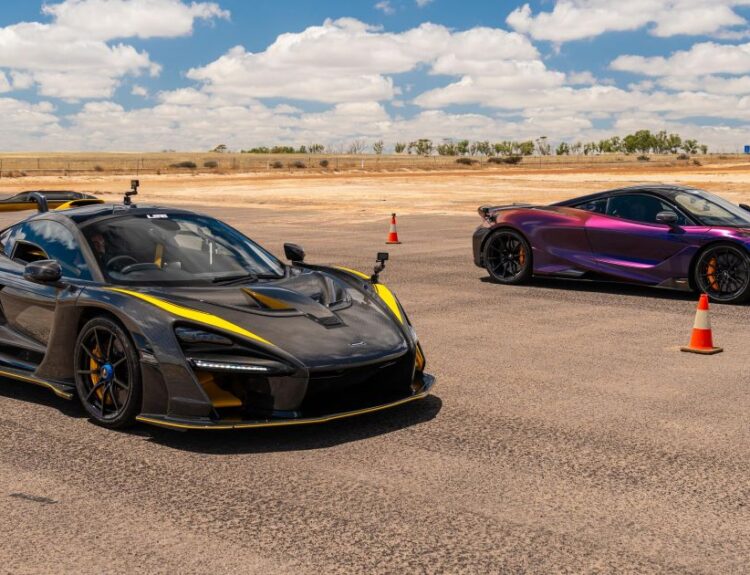As 2023 draws to a close, the automotive landscape presents a complex tableau that demands scrutiny—one that encompasses triumphs, failures, and the awkward transitions in between.
This year unfolded with the introduction of notable new models, including a trio of all-new dual-cab 4×4 utes. Conversely, it also witnessed the retirement of several long-standing nameplates, an influx of new Chinese automotive brands, and the sad farewell of a storied French manufacturer.
Herein lies a roundup of the most disappointing narratives, trends, and vehicles highlighted by the CarExpert team in 2024.
### Paul Maric: A Flawed Jaguar Rebranding
One could hardly engineer a more misguided brand relaunch than what Jaguar has undertaken. While some may perceive this as a clever marketing maneuver, it starkly illustrates the pitfalls of entrusting brand stewardship to “woke” marketers—often at odds with a legacy and loyal customer base.
If we momentarily set aside the cringe-worthy marketing, Jaguar’s ambition to position itself in the fully electric luxury segment raises eyebrows. This is a market currently devoid of substantial demand, with many manufacturers beginning to reconsider their aggressive electrification timelines.
Best of luck to them; however, it seems likely that the entire marketing team may face the axe before the new model even graces the dealership floor. It’s high time for a sincere apology to the engineers and designers—the true backbone of the brand—who bore no responsibility for this misguided campaign.
### Marton Pettendy: The Kia Tasman’s Underwhelming Debut
The Kia Tasman, unveiled this October, arrives as a letdown after protracted anticipation. While it checks all the essential boxes for versatility—catering to both tradespeople and adventurers—with an array of powertrains and a robust warranty, its design leaves much to be desired.
Kia sought to differentiate this first global pickup with a unique aesthetic that bears a resemblance to its EV series. However, the result is a boxy, unconventional shape that does little to endear itself to traditional ute enthusiasts. The odd placement of its headlights and the bewildering wheel-arch flares only compound the issue.
Though taste in design varies, I find myself yearning for the more aesthetically pleasing lines of the Ford Ranger. At the very least, Kia’s debut doesn’t outshine its predecessor, leaving room for improvement as future iterations evolve.
### William Stopford: The Ford Puma’s Untimely Departure
Ford Australia’s transformation into a primarily commercial vehicle brand reached a troubling milestone with the discontinuation of the Puma—my personal favorite in the light SUV category.
The rationale behind maintaining an affordable entry point lies in fostering customer loyalty; those drawn in by a budget-friendly model often aspire to upgrade as their circumstances evolve. By eliminating both the Puma and its logical successor, the Escape, Ford has disregarded this crucial aspect of brand development, leaving a glaring gap in its lineup.
Now, potential Puma owners face a leap to more expensive offerings, either rugged off-roaders or electric SUVs—both compelling but ultimately price-prohibitive compared to the accessible Puma or Escape. As the brand becomes increasingly reliant on its ute sales, one must wonder if Ford is astutely capitalizing on its strengths or dangerously narrowing its focus.
### Jordan Mulach: The Downfall of the Geneva Motor Show
The demise of the Geneva Motor Show is perhaps the most significant indicator of the current state of Europe’s automotive industry. Even with its much-anticipated return in 2024, this 117-year-old event has faded into irrelevance, undermined by the ascent of Chinese automakers and shifts among legacy brands.
Australia experienced a similar loss; the last genuine Australian International Motor Show took place in 2012, leaving a permanent void. Though the Geneva show may continue in a new format in Doha in 2025, it will lack the legacy of unveiling icons like the Jaguar E-Type.
### Jack Quick: Jaguar’s Rebranding Fiasco
While Jaguar never garnered my undivided admiration, its recent rebranding efforts appear almost farcical. Disregarding a celebrated 90-year history in favor of an entirely new identity seems misguided, to say the least.
This strategy has undeniably attracted attention, but one must question how Jaguar Land Rover intends to sustain the brand in the absence of new vehicles until 2026.
### Josh Nevett: A Year of Performance Car Farewells
In the realm of automotive sacrifices, few stings quite as deeply as the departure of beloved performance models. Among these, the discontinuation of the V8 Mercedes-AMG C63 and Lamborghini’s V10 stands out painfully, while the loss of compact performance heroes like the Abarth 695 and Renault Megane RS leaves a notable void for aspiring enthusiasts.
The Jaguar F-Type’s end, too, deserves mention, stirring sentiments I’ll explore in a forthcoming piece this holiday season. Though such transitions signal progress, they are often accompanied by a melancholic farewell.
### Max Davies: Disappointment with the Subaru Forester STI Sport
As an admirer of Subaru’s performance legacy, the debut of the Forester STI Sport fell flat for me. While anticipation surrounded its arrival, the upgraded model disappointingly offers mere aesthetic changes rather than any enhancement in power or performance.
In Japan, the Forester STI Sport benefits from a turbocharged engine delivering robust torque, a feature conspicuously absent from the Australian version. It’s a missed opportunity to revive the STI spirit and challenge competitors in a meaningful way.
Yet, while the Forester STI Sport doesn’t disappoint as a car, it’s high time Subaru reconsidered the brand’s attachment of its performance badge to models that lack genuine performance credentials.
Source:www.carexpert.com.au






